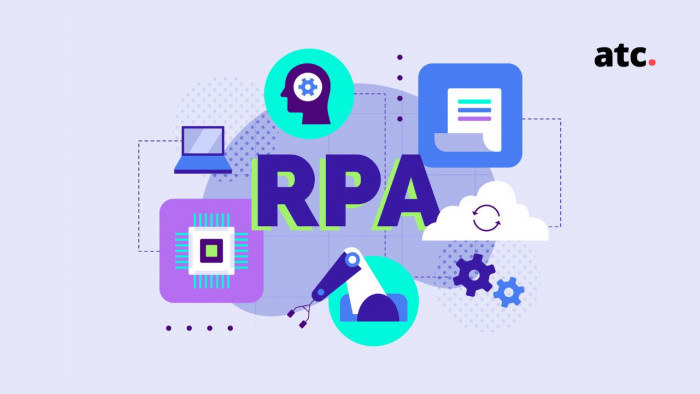RPA (Robotic Process Automation)
RPA, or Robotic Process Automation, is a technology that uses software robots to automate repetitive and rules-based tasks that are normally performed by humans.

RPA may be used to automate which processes?
RPA can be used to automate a wide range of processes, including:
Data entry and processing: RPA can be used to automate the process of entering data from one system into another, as well as to extract data from documents and spreadsheets.
Customer service: RPA can be used to automate the process of responding to customer inquiries, such as generating email responses, processing refunds, and updating customer account information.
Financial processes: RPA can be used to automate a wide range of financial processes, including accounts payable and receivable, invoice processing, and reconciliation.
HR processes: RPA can be used to automate a range of HR processes, including employee onboarding, performance management, and benefits administration.
Supply chain management: RPA can be used to automate the process of tracking inventory, placing orders, and managing shipping and delivery.
IT operations: RPA can be used to automate the process of monitoring and maintaining IT systems, such as software updates and system backups.
Marketing and sales: RPA can be used to automate the process of lead generation, customer segmentation, and email marketing.
In general, any process that is rules-based, repetitive, and involves digital data can be automated using RPA.
Scheduling
Meetings are indeed a crucial part of any organization, and their scheduling can be a challenging task. Robotic Process Automation (RPA) tools can automate the process of scheduling meetings, which can save a lot of time and effort for organizations. Here are some examples of how RPA can be used for meeting schedules:
Scheduling Interviews: A company might need to schedule interviews with multiple candidates, which can be a time-consuming and tedious process. RPA tools can be used to send out interview requests and check the availability of both the interviewers and interviewees. The tool can then schedule the interviews at a mutually convenient time, saving the company's time and effort.
Scheduling Client Meetings: Businesses often have to schedule meetings with clients who are in different time zones or have busy schedules. RPA tools can be used to check the availability of the client and the organization's representative, find a time that works for both and schedule the meeting. This can ensure that the meeting takes place at a convenient time for all parties involved, improving the relationship with the client.
Scheduling Team Meetings: Teams within an organization might need to have regular meetings to discuss progress, updates, and plan their work. RPA tools can help automate the process of scheduling these meetings, by checking the availability of all team members, finding a time that works for everyone, and sending out calendar invites. This can save a lot of time for the team members, who can focus on their work instead of spending time coordinating meeting schedules.
Scheduling Training Sessions: Organizations often need to schedule training sessions for their employees, which can be a complex process if there are multiple sessions and attendees. RPA tools can be used to automate the process of scheduling these sessions by checking the availability of the trainer and the attendees, finding a suitable time for everyone, and sending out invites. This can ensure that all employees receive the necessary training without the organization having to spend significant time coordinating schedules.
Excessive wait periods might raise the risk of health deterioration and lead to litigation against the healthcare provider. RPA can help you enhance your queue management system and guarantee that patients receive the required service as soon as possible.
FAQ Inquiry
Robotic Process Automation (RPA) tools can be used to deploy chatbots that can help answer frequently asked questions (FAQs) instantly. Here's how it works:
· Training the chatbot: The first step in deploying a chatbot is to train it to recognize and respond to specific questions. This involves inputting the most frequently asked questions and the corresponding answers into the chatbot's database.
· Integration with RPA tools: Once the chatbot has been trained, it can be integrated with RPA tools to allow for seamless communication with users. This integration allows the chatbot to access the RPA tools' data and provide accurate and up-to-date answers to users' questions.
· Availability: The chatbot can be available 24/7, and users can access it from anywhere at any time, which saves them from having to wait for a human agent to respond to their queries.
· Instant Responses: The chatbot can provide instant responses to frequently asked questions, which saves users' time and reduces the workload on human agents who might otherwise have to answer the same questions repeatedly.
· Constant Improvement: The chatbot can be continuously improved over time by adding new questions and answers, as well as by analyzing the chatbot's interaction with users to identify areas for improvement.
· Increased Efficiency: By automating the process of answering frequently asked questions, RPA tools can help increase the efficiency of the organization, as it saves time and effort that would otherwise be spent on repetitive tasks.
Conclusion
In summary, RPA tools can be used to automate the process of scheduling meetings, which can save organizations a lot of time and effort. These tools can be used for scheduling interviews, client meetings, team meetings, and training sessions, among others. By automating the scheduling process, organizations can ensure that meetings are scheduled efficiently, and all parties involved can attend the meetings at a time that works for them also deploying a chatbot that can answer FAQs instantly using RPA tools can save everyone's time by providing accurate, up-to-date answers to users' questions 24/7. This can improve the user experience, reduce the workload on human agents, and increase the efficiency of the organization.
That brings our essay on which important processes you can automate using RPA to a close. The list is not complete, but it seeks to offer an idea of how RPA may be used in any business. Get in touch with us to learn more about our RPA services and how they may help you gain a competitive advantage.
















